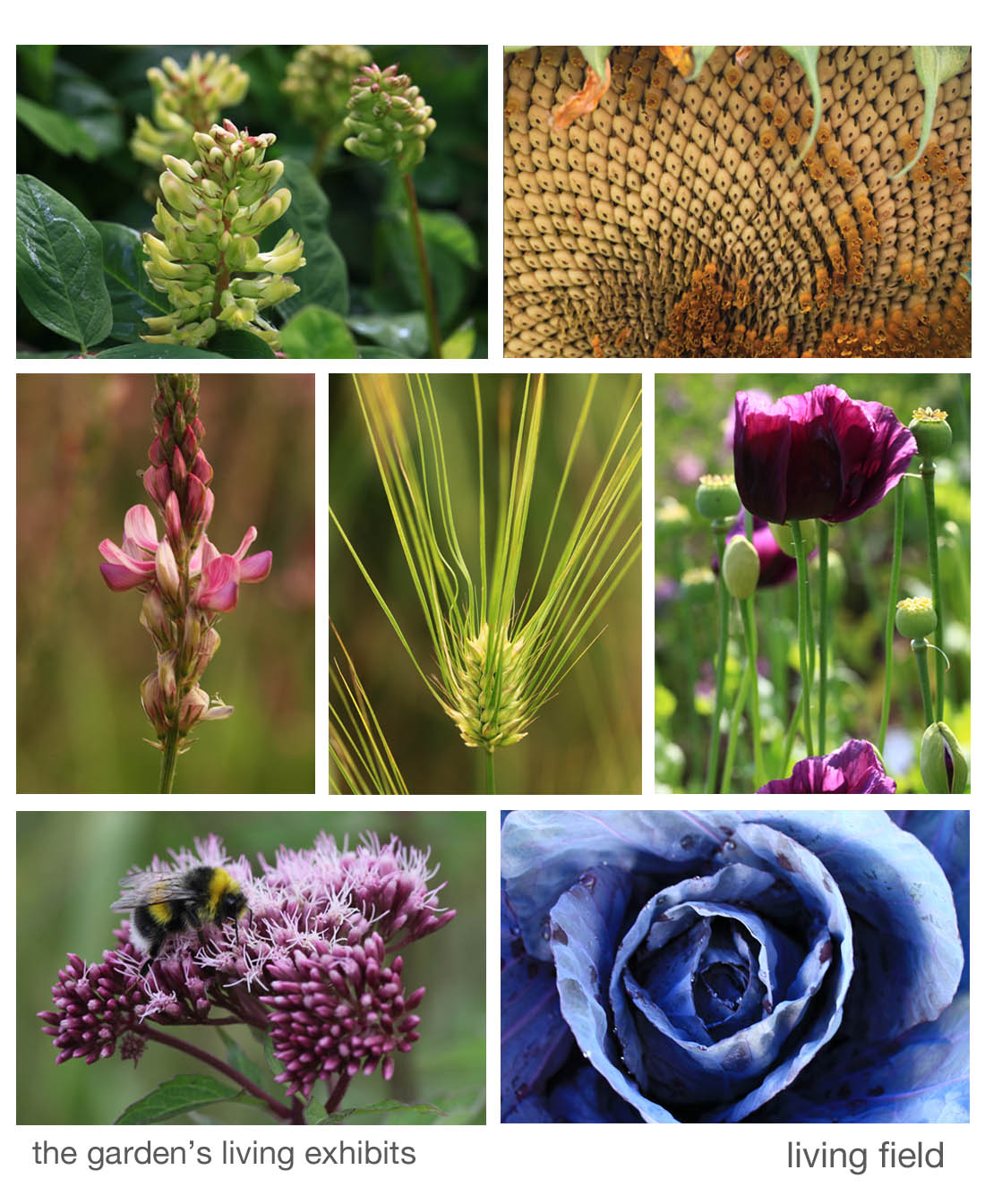The garden grows and displays sets of plants that are or have been important in the life of the croplands. Some of these plants are economically important today. Others were vital just a few decades or centuries ago, but are grown no longer. Still others have not been grown here for hundreds or thousands of years. Yet all have contributed their bit to the history of the croplands.
The exhibits –
- cereals – the mainstay and staple carbohydrate of the croplands for 5000 years
- legumes – high in protein, grains and forages
- medicinal and culinary herbs
- dyes
- vegetables – including roots and tubers
- oils (in progress)
Each exhibit is linked to the 5000 years project, and shows some of the plants that have shaped the croplands since before the first settlers arrived here with their knowledge and seed. They would recognise many of our plants today, except recent imports such as potato.
The menu to the right also has links to the main exhibits.
Images above from top left clockwise: milk vetch (legumes), sunflower head (oils), opium poppy (medicinals), blue cabbage (vegetables), hemp-agrimony with bee (bee-plants), the forage plant sainfoin (legumes) and in the centre an old barley variety (cereals).
Back to the Garden front page; on to the garden’s Habitats.
[last updated: 22 May 2016]

